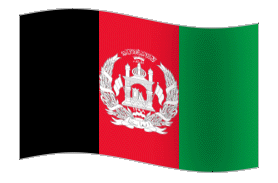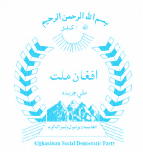دافغان ملت ملي مترقي ګوند

Afghanistan Social Democratic Party

Afghanistan Reconstruction in Retrospect: A Journey of Ten Years
By: Ajmal Shams
In 2002, when the interim government of President Hamid Karzai came to power in Afghanistan,
it virtually started from a scratch. The state machinery, for all practical purposes,
did not exist. This degeneration of the state had already started during the post-
After more than a decade of the PRTs engagement, they are gradually being phased
out as a consequence of the Transition. It is important at this stage to revisit
the accomplishments and shortcomings of PRTs, the impact they have had on the lives
of Afghans and what did not go right during various phases of PRTs-
The main focus of PRTs development efforts was obviously the infrastructure where transportation topped the list of priorities followed by administrative buildings, clinics and schools. Roads and bridges were important not only for the rapid movement of people and goods but also for providing quick supply routes for security forces stationed at various geographical points across the country. PRTs built thousands of kilometers of roads particularly in remote provinces whose accessibility to Kabul was one of the main challenges both for the security operations and reconstruction activities. In the beginning of Mr. Karzai’s administration, provinces had few administrative buildings in dilapidated conditions. In order for the state to exhibit its credibility, it was vital to establish functional building facilities for the government operations both in provincial capitals and districts. A remarkable job was done by PRTs in this regard despite shortcomings. Of all the nations that had military presence in the country, US PRTs were predominant both in terms of available funding and capacity to provide development and humanitarian projects.
PRTs mainly worked with Provincial Administrations that identified priority and most-
Although a timely response to urgently needed infrastructure services, the PRT mechanism
was not without faults. PRTs contracted a large number of projects to Afghan Contractors
who had little or no capacity and/or previous experience. Most of these contractors
would claim financial and technical resources, which they did not possess. PRTs,
however, had limited technical and monitoring resources for oversight. There was
hardly a system of check and balance and most of these projects went to the lowest
bidders. It was here that the quality was compromised for lower cost, which was the
only criterion for awarding projects. This situation, however, did not persist for
long and PRTs continued to evolve by increasing their technical capacity and adopting
measures that required the Contractors to comply with technical standards. Supervision
and monitoring by engineering teams of PRTs increased. The appearance of the Army
Corps of Engineers added value and technical quality to US PRTs financed projects.
In spite of all the measures, PRT projects remained least cost-
Regardless of the technicality and engineering quality of PRT financed projects,
the economic value of this huge development intervention by PRTs has been remarkable.
Thousands of unskilled laborers, technicians and engineers were recruited. This has
had an important impact on the lives of people in provinces. This, however, has also
given rise to a new class of the rich, who proverbially became rich overnight by
winning projects due to being the lowest bidders. The social problems created by
this “Get Rich Quick” phenomenon, partially spurred by PRTs speedy procurement procedures,
remains a challenge for the Afghan society. The PRTs mainly followed their own country-
One of the challenges of the infrastructure created by PRTs is its sustainability due to limited or no institutional operation and maintenance plan in place as part of the project design. Moving forward, the Afghan government must obtain a complete inventory of the assets created by PRTs and the equipment and resources provided to the Provincial and District governments as a first step to take over the complete ownership.
It is quite noticeable that the PRTs operational policy was driven mainly by a sense
of urgency to spend the planned annual budget rather than the long-
Copyright © Afghan Millat 2007-